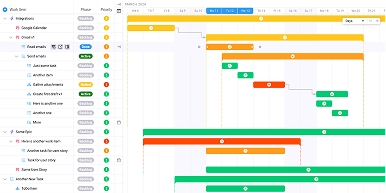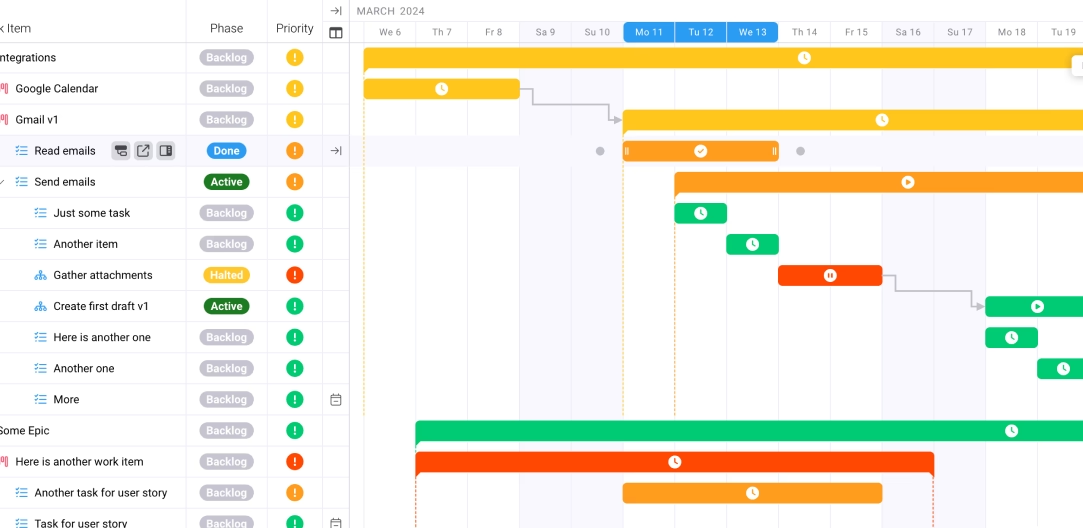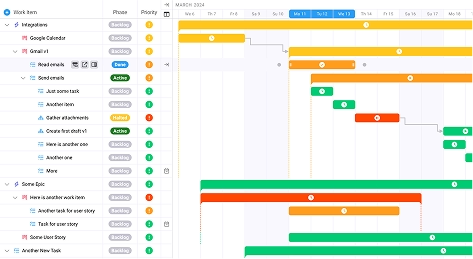
Financial Management for Marketing Agencies: Budgeting and Cash Flow Mastery
Key takeaways:
- Cash flow mastery is essential: Nearly one-third of agencies identify cash flow as their primary business challenge, making financial management skills critical for survival and growth
- Strategic budgeting drives results: Agencies that implement structured budgeting processes achieve better resource allocation and improved profitability margins
- Technology integration matters: Modern financial management platforms help agencies automate processes, reduce errors, and gain real-time visibility into their financial health
- Prevention beats reaction: Proactive financial planning helps agencies avoid common pitfalls like cash flow crunches, cost overruns, and unprofitable project acceptance
Effective financial management for marketing agencies has never been more critical as 13% of agencies cite cash flow problems as the number one challenge their agency is facing today. The stark reality facing agency leaders in 2025 is that brilliant creative campaigns and exceptional client results mean nothing if your financial management for marketing agencies isn’t rock-solid. While competitors struggle with basic budgeting and cash flow issues, smart agency owners are building robust financial frameworks that fuel growth rather than hinder it.
The Current Financial Management Crisis in Marketing Agencies
The marketing agency landscape is experiencing unprecedented financial pressures. 29% of agencies see maintaining cash flow as their biggest pain point, and 31% say it’s preventing them from growing as fast as they’d like. This isn’t just a small business problem—it’s a systemic issue affecting agencies of all sizes.
The root causes run deeper than many agency leaders realize. 61% of small businesses regularly face cash flow issues, with 32% sometimes unable to pay employees, loans, or vendors. For marketing agencies specifically, this challenge is amplified by the nature of their business model: irregular revenue streams, project-based work, extended payment cycles, and the constant pressure to invest in new tools and talent.
Adding to these challenges, 42% of small business owners admit they had limited or no financial literacy before starting their businesses. This knowledge gap becomes particularly problematic when creative professionals transition into business ownership without adequate financial training.
The economic environment isn’t helping either. 41% of small business owners state their number one challenge is related to the economy and inflation, with another 14% struggling most with financial concerns. Rising costs, increased competition, and shifting client expectations are forcing agencies to become more sophisticated in their financial management approaches.
The Strategic Framework for Agency Financial Excellence
Successful financial management for marketing agencies requires a systematic approach that goes beyond basic bookkeeping. The most resilient agencies build their financial strategies around four core pillars: predictable revenue generation, strategic cost management, intelligent cash flow optimization, and data-driven decision making.
Predictable Revenue Generation
The foundation of any stable agency financial system starts with creating predictable revenue streams. This means shifting away from purely project-based work toward models that provide more consistent income. Retainer agreements, subscription-style services, and performance-based contracts help smooth out the feast-or-famine cycles that plague many agencies.
Diversification also plays a crucial role. Agencies that rely heavily on one or two major clients face significant financial risk. Building a portfolio of mid-sized clients often provides more stability than chasing large enterprise accounts that can disappear overnight.
Strategic Cost Management
Poor cash flow is one of the biggest challenges that marketing and creative agencies face in today’s fast-paced business landscape. Effective cost management goes beyond cutting expenses—it’s about optimizing spending to maximize return on investment.
Fixed costs like office space, software subscriptions, and core team salaries need careful evaluation. Many successful agencies are adopting hybrid work models to reduce real estate costs while investing more in technology and team development.
Variable costs tied to project delivery require even more attention. Scope creep, inefficient processes, and poor resource allocation can quickly turn profitable projects into loss leaders.
Intelligent Cash Flow Optimization
Cash flow management is perhaps the most critical skill for agency leaders. Unlike traditional businesses with predictable cash cycles, agencies must navigate irregular income patterns while maintaining consistent operational expenses.
Successful agencies implement rolling 90-day cash flow forecasts that account for project timelines, payment terms, and seasonal variations. They also maintain cash reserves equivalent to 3-6 months of operating expenses to weather unexpected challenges.
Data-Driven Decision Making
71% of small businesses are using business budgeting software to help manage finances. Modern agencies leverage technology to gain real-time visibility into their financial health. This includes tracking key performance indicators like profit margins by client, project profitability, and resource utilization rates.
Implementation Tactics: Building Your Financial Management System
Creating an effective financial management system requires specific, actionable strategies that address the unique challenges facing marketing agencies. Here are five proven approaches that successful agencies use to achieve financial mastery.
1. Establish Comprehensive Budgeting Frameworks
Budget allocation in marketing agencies differs significantly from other industries. Chief marketing officers found that an average 7.7% of company revenue was allocated to marketing in 2024, but agencies must budget for both their own marketing efforts and the infrastructure needed to deliver client work.
The most effective agency budgets follow a 70-20-10 framework: 70% allocated to proven operational needs, 20% invested in growth opportunities, and 10% reserved for innovation and experimentation. This approach ensures stability while maintaining the agility needed to capitalize on new opportunities.
For client work, implement zero-based budgeting for each project. Rather than using historical data or industry averages, build budgets from the ground up based on specific project requirements. This approach helps identify true costs and ensures appropriate pricing.
2. Optimize Payment Terms and Collection Processes
Late payments are the silent killer of agency cash flow. Implement systematic approaches to invoice management that include clear payment terms, automated follow-up sequences, and incentives for early payment.
Net-15 terms work better than Net-30 for most agencies, especially when combined with early payment discounts. Consider requiring deposits or milestone payments for larger projects to reduce cash flow gaps.
Financial management integration with project management tools streamlines agency operations. Integrated systems automatically generate invoices based on completed work, reducing delays and improving accuracy.
3. Implement Dynamic Resource Planning
Resource planning in agencies requires balancing billable capacity with business development needs. The most successful agencies maintain utilization rates between 70-80% for senior staff, allowing time for strategic work while maximizing revenue.
Track resource allocation in real-time using project management platforms that integrate with financial systems. This visibility helps identify when to hire additional team members or when to decline new projects to maintain quality standards.
4. Develop Robust Financial Reporting Systems
Marketing accounts for 10.1% of overall company budgets, and around 7.7% of company revenues. Understanding these industry benchmarks helps agencies evaluate their own financial performance and identify areas for improvement.
Implement monthly financial reviews that include profit and loss analysis, cash flow projections, and key performance indicators. Track metrics like gross margin by service line, client lifetime value, and cost per acquisition for new business.
Marketing agency growth optimization requires strategic project management approaches. Regular financial reporting enables data-driven decisions about service offerings, pricing strategies, and growth investments.
5. Build Strategic Cash Reserves
Financial reserves aren’t just emergency funds—they’re strategic assets that enable agencies to invest in opportunities, weather economic downturns, and maintain stability during growth phases.
Successful agencies typically maintain reserves equal to 3-6 months of operating expenses. Build these reserves gradually by setting aside 10-15% of monthly profit until targets are reached.
Measuring Success: Key Performance Indicators for Agency Financial Health
Effective financial management requires consistent monitoring of the right metrics. While every agency is unique, certain key performance indicators provide essential insights into financial health and operational efficiency.
Profitability Metrics
Gross margin by service line reveals which offerings generate the strongest returns. Most successful agencies target gross margins of 50-70%, though this varies by service type and market positioning.
Net profit margins for healthy agencies typically range from 10-20%. Lower margins often indicate pricing issues or operational inefficiencies, while consistently higher margins might suggest opportunities for reinvestment in growth.
Cash Flow Indicators
Days Sales Outstanding (DSO) measures how quickly agencies collect payments. Target DSO of 30-45 days for most agencies, though this depends on payment terms and client mix.
Cash conversion cycle tracks the time from project start to payment collection. Shorter cycles improve cash flow and reduce working capital requirements.
Operational Efficiency Measures
Utilization rates for billable staff should target 70-80%. Higher rates risk burnout and quality issues, while lower rates suggest pricing or sales challenges.
B2B spending is 8.4% of revenue, and B2C is 5.7% according to Gartner research reports. These benchmarks help agencies evaluate their own marketing investments and identify optimization opportunities.
Growth and Investment Metrics
Revenue per employee provides insights into productivity and scalability. Most successful agencies generate $150,000-$250,000 in revenue per full-time employee.
Client concentration risk measures dependence on major accounts. Healthy agencies typically limit any single client to 20-30% of total revenue to maintain stability and negotiating power.
Future Considerations: Evolving Financial Management Strategies
The marketing agency landscape continues evolving rapidly, driven by technological advancement, changing client expectations, and economic uncertainty. Successful agencies are already adapting their financial management strategies to address emerging challenges and opportunities.
Technology Integration and Automation
Financial management technology is becoming increasingly sophisticated, offering agencies powerful tools for automation and analysis. Artificial intelligence and machine learning capabilities are improving cash flow forecasting accuracy and identifying optimization opportunities that manual analysis might miss.
Integration between project management, financial management, and client relationship management systems is eliminating data silos and providing real-time visibility into financial performance. Agencies that embrace these integrated approaches gain significant competitive advantages in efficiency and decision-making speed.
Evolving Business Models
Traditional project-based pricing is giving way to more sophisticated models that provide better revenue predictability. Value-based pricing, outcome-driven contracts, and subscription-style services are becoming more common as agencies seek to improve their financial stability.
Modern pricing strategies directly impact agency financial health and cash flow stability. Agencies that master these evolving pricing approaches position themselves for sustainable growth while improving client relationships through aligned incentives.
Economic Resilience Planning
Recent economic volatility has highlighted the importance of financial resilience planning. Successful agencies are developing scenario-based financial models that help them prepare for various economic conditions.
Diversification strategies extend beyond client mix to include service offerings, geographic markets, and revenue models. This diversification provides stability during economic uncertainty while creating multiple growth pathways.
Regulatory and Compliance Considerations
Changing regulations around data privacy, employment law, and financial reporting are creating new compliance requirements that affect agency financial management. Staying ahead of these changes requires proactive planning and often additional investment in systems and processes.
International expansion opportunities also bring new financial management challenges, including currency risk, tax compliance, and transfer pricing considerations. Agencies pursuing global growth need sophisticated financial frameworks to manage these complexities effectively.
Frequently Asked Questions
What percentage of revenue should marketing agencies spend on their own marketing?
Most successful marketing agencies allocate 5-10% of their revenue to their own marketing efforts, which is lower than the industry average due to their ability to handle marketing activities in-house.
How much cash reserve should an agency maintain?
Financial experts recommend maintaining cash reserves equal to 3-6 months of operating expenses, with agencies in volatile markets targeting the higher end of this range.
What’s the ideal profit margin for a marketing agency?
Healthy marketing agencies typically achieve net profit margins of 10-20%, with gross margins ranging from 50-70% depending on service mix and operational efficiency.
How can agencies improve their cash flow without taking on debt?
Key strategies include shortening payment terms, requiring project deposits, improving invoice collection processes, and optimizing project delivery timelines to reduce working capital requirements.
What financial metrics should agency owners track daily?
Daily monitoring should focus on cash position, accounts receivable aging, and project delivery milestones that trigger billing opportunities.
When should an agency consider hiring a full-time CFO?
Most agencies benefit from professional financial management when they reach $2-5 million in annual revenue, though this varies based on complexity and growth rate.
Conclusion
Financial management for marketing agencies doesn’t have to be a constant source of stress and uncertainty. By implementing the strategic frameworks, practical tactics, and monitoring systems outlined in this guide, agency leaders can build the financial foundation needed for sustainable growth and long-term success. Remember that financial management for marketing agencies is an ongoing process that requires continuous attention and refinement. The agencies that master these disciplines position themselves not just to survive market challenges, but to thrive and lead their industries into the future.









